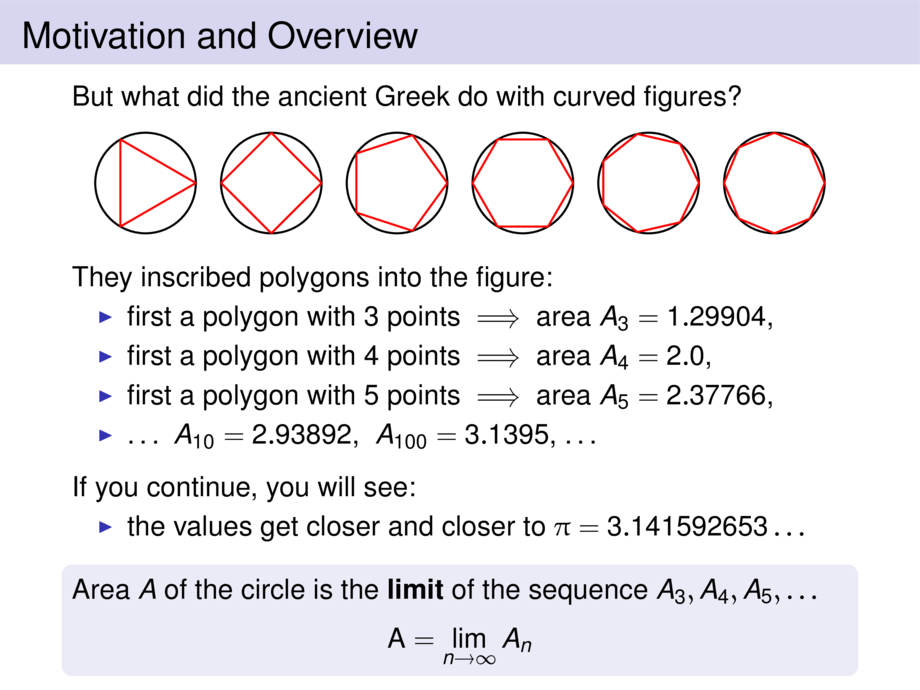



































































































18/60
\begin{frame}
\frametitle{Motivation and Overview}
But what did the ancient Greek do with curved figures?
\begin{center}
\begin{tikzpicture}[default,scale=.7]
\onslide<1,2>{
\draw (0,0) circle (1cm);
}
\foreach \c in {2,3,4,5,6,7} {
\setcounter{tmpcounter}{\c}
\addtocounter{tmpcounter}{1}
\onslide<\arabic{tmpcounter}->{
\begin{scope}[xshift={(\c-2)*2.5cm}]
\draw (0,0) circle (1cm);
\inscribe{\c}
\end{scope}
}
}
\end{tikzpicture}
\end{center}
\pause
They inscribed polygons into the figure:
\begin{itemize}
\foreach \c in {3,4,5} {
\pause
\pgfmathparse{1/2*\c*sin(360/\c)}
\item first a polygon with $\c$ points $\implies$ area $A_\c = \pgfmathresult$,
}
\pause\pause\pause\pause
\item \ldots
\foreach \c in {10,100} {
\pgfmathparse{1/2*\c*sin(360/\c)}
$A_{\c} = \pgfmathresult$,
}\ldots
\end{itemize}
\pause\medskip
If you continue, you will see:
\begin{itemize}
\pause
\item the values get closer and closer to $\pi = 3.141 592 653 \ldots$
\end{itemize}
\pause
\begin{block}{}
Area $A$ of the circle is the \emph{limit} of the sequence $A_3,A_4,A_5,\ldots$
\pause
\begin{talign}
\text{A} = \lim_{n\to\infty} A_n
\end{talign}
\end{block}
\end{frame}

